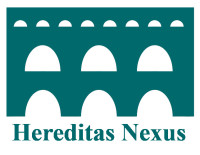
Reviewer: Wouter van Dijk
Blood of the Celts. The New Ancestral Story, Jean Manco
Thames and Hudson Ltd, London 2015
ISBN: 9780500051832
Hardback with dust jacket, with illustrations, appendix, notes, bibliography and index
240 pages
£18,95 / €21,03
Tracing the Celts through linguistics and genetics
The ancient Celts continue to trigger the imagination of people today, archaeologists and historians included. Now, with the help of ever more sophisticated research techniques the historical story of the Celts is being told time and again. Earlier I wrote about the use of modern forensic sciences to examine bog bodies from the Iron Age, today historian Jean Manco’s book about the use of genes, DNA and linguistics in piecing together the history of the Celts will be discussed. With her book Manco aims to follow the thread of Celtic history from its ancient origins to the present day, primarily using genetics and language, which seems at least challenging.
In her prologue the author presents historian Eoin MacNeill’s definition of a Celt as leading in her demarcation of the subject, thus ‘someone speaking a Celtic language’. This is a significantly narrowed point to start from, since Koch, Cunliffe and others have made plausible that Celtic languages were used by people who left no trace of Hallstatt or La Tène culture for instance in southwestern Iberia. There are also examples of non-Celtic speakers who produced the most stunning swirling art we now recall as typically Celtic. Were they not Celts? Manco avoids to touch on these difficulties but since a definition of a Celt is needed we’ll go along with her for the ride.
Manco’s narrative opens with the early medieval Celtic heirs in Britain and Ireland. She then travels back in time searching for the oldest Celtic evidence, after which she returns to the present in order to find the links, both genetic as linguistic, between ancient Celtic origins and modern-day Welsh, Irish and Breton speakers. The oldest preserved literature in a Celtic language comes from Ireland and Wales but the language is of course much older than these early medieval texts. According to linguistic research, Celtic as a language seems to have spread from central Europe to Britain and Ireland along with La Tène culture. The complication here is that in southern Ireland as well as in southwestern Iberia Celtic was spoken but barely a trace of La Tène material has been found. Perhaps because of this, the origins of Celtic lie in the Old European language people of the Bell Beaker culture (c. 2800-1800 BC) may have spoken, Manco suggests. Evidence from Bell Beaker culture is found in all areas known as subsequently Celtic-speaking. It should have been the Bell Beaker people’s language Old European (Alteuropäisch) that was the immediate predecessor of proto-Celtic, which probably developed in central Europe. From there it would have spread to northwestern Iberia.
Apart from the special edge about genetic and linguistic development Manco’s book mainly keeps to the well-established narrative of Celts and Celtic spreading from central Europe to the East and West. The centre stage is reserved for linguistic research, while archaeological evidence is treated on the side. A major new development Manco misses this way is the spectacular new understanding of the Heuneburg site in southern Germany, which was probably the ancient city of Pyrene “in the lands of the Celts” as mentioned by ancient Greek geographer Herodotus of Halicarnassus.
Manco goes back all the way to the Stone Age to trace the linguistic ancestor of the Celtic language. She dismisses Kochs and Cunliffe’s thesis that the Celtic language originated in Iberia, and delivers good arguments for doing so. Instead she pleads for a return to the traditional idea of central Europe north of the Alps as the birthplace of Celtic, inter alia because of its contacts with proto-Germanic and Iranian, something impossible to have happened in Iberia. This is a most interesting approach in looking at the development of Celtic and its spread over the continent. In my opinion however, language cannot be seen apart from material culture, and this remains an important facet defining a civilization’s culture. Since Manco’s main aim was to focus on genetic and linguistic research we leave at that, and finish with some words on the overall outlook of the book. Judging it from cover to cover the book itself is beautifully designed, as always seems the case with Thames & Hudson publications. In addition, the illustrations, maps and intermezzo’s about the genetics assist the main narrative in a most helpful manner, although the DNA diagrams can be somewhat dazzling here and there for those such as me who are not familiar with genetics. Overall it can be stated Manco surely succeeded in writing a thought-provoking and very interesting narrative, thereby inviting fellow scholars of the Celts to join in this relatively new arena of genetic research to help us unravel the conduct of these ‘first masters of Europe’, the Celts.
Wouter van Dijk
